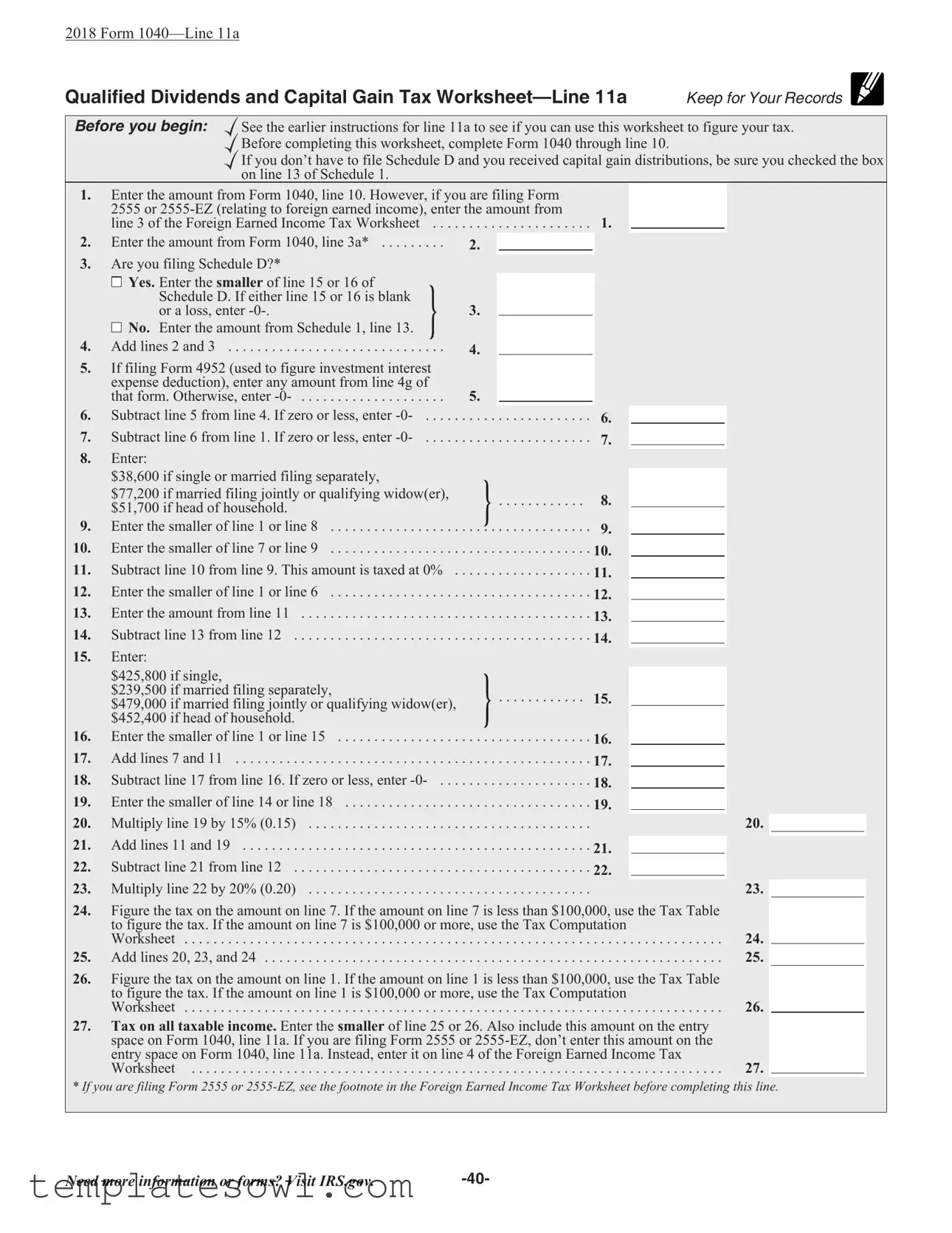The Qualified Dividends Tax Worksheet is a calculation tool used to determine the tax on qualified dividends and capital gains for individuals filing their federal tax returns with IRS Form 1040. This worksheet helps identify the correct tax rates that may apply to dividend income, which can be lower than ordinary income tax rates.
What information do I need before starting the worksheet?
Before beginning the worksheet, ensure you have completed Form 1040 up to line 10. You may also require information from Schedule D or Schedule 1, specifically lines that pertain to capital gains and dividends received. Having recent tax guidelines can be beneficial as well.
Can this worksheet be used if I’m filing Form 2555 or 2555-EZ?
If you are using Form 2555 or 2555-EZ regarding foreign earned income, you will need to follow specific instructions that deviate slightly from filling out this worksheet. Be sure to check the footnotes related to those forms before proceeding.
How do I know if my dividends are considered qualified?
Qualified dividends typically come from stocks held for a specified period and paid by U.S. corporations or qualifying foreign corporations. The dividends must meet certain criteria as outlined by the IRS. If in doubt, consider reviewing the IRS guidelines or consulting a tax professional.
What are the tax rates on qualified dividends?
Qualified dividends are generally taxed at favorable rates, including 0%, 15%, or 20%, depending on your overall taxable income and filing status. The worksheet helps identify which portion of your income falls under these rates based on the calculations performed.
What do I do if my income is significantly low?
If your taxable income is low enough, you may qualify for the 0% tax rate on a portion or all of your qualified dividends. The worksheet outlines specific thresholds. If your income is below these thresholds, it may reduce your tax burden significantly.
What should I do with the final amount calculated on this worksheet?
The final figure you determine using the Qualified Dividends Tax Worksheet should be entered in the appropriate space on your Form 1040, specifically on line 11a. If you have filed other forms related to foreign income, special instructions will apply.
What if I made a mistake on the worksheet?
Errors occur, and it’s important to correct them before filing your taxes. If you discover a mistake after you have completed the worksheet, recalculate your numbers and ensure adherence to IRS guidelines. Depending on when you discover the error, you may need to file an amended return.
Where can I find more information about this worksheet?
Additional information and instructions can be accessed on the IRS website at IRS.gov. The site offers resources and further clarifications on how to use the Qualified Dividends Tax Worksheet and related filing matters.



